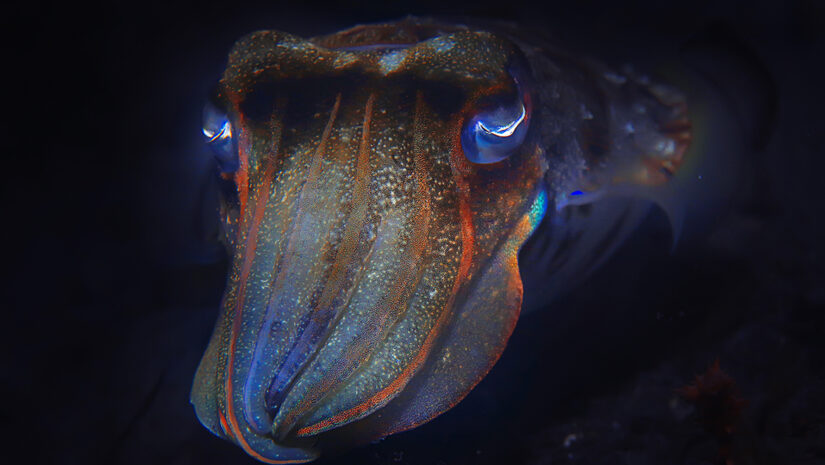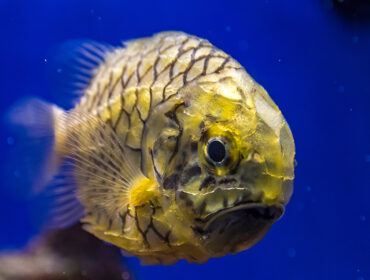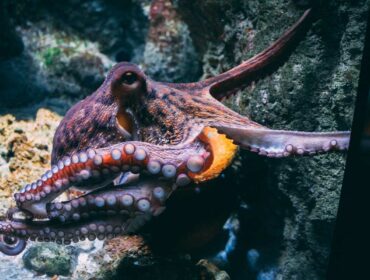With greenish-blue blood, three hearts, a doughnut-shaped brain, and the ability to change color in a flash, the Cuttlefish is undoubtedly one of the brainiest and most bizarre animals in the ocean, almost alien, as some would say.
Belonging to the Cephalopod “head-and-foot animal,” cuttlefish are not fish but mollusks of the Sepiida class, just like octopus, squids, and the ancient nautilus. Similar in appearance to their squid relatives, they have one prominent distinguishing feature- their internal structure/shell called the cuttlebone, popularly seen at the bottom of bird cages and used as a calcium supplement. This unusual porous calcium-based ‘cuttlebone’ not only forms the shape of their body but also provides the cuttlefish with buoyancy control. Just as a BCD (Buoyancy Control Device or Buoyancy Compensator) is used in Scuba diving, the cuttlefish can regulate its buoyancy by changing the gas-to-liquid ratio in the chambered cuttlebone via a strand of tissue that passes through it. Cuttlefish also have eight arms and two tentacles, between which their beak-like mouth can be seen, as well as two fins that wrap around the mantle.
Facts about the Cuttlefish
With a highly advanced nervous system and one of the most significant brain-to-body size ratios of all invertebrates, Cuttlefish are among the most intelligent species and undisputed masters of disguise. As they are sometimes referred to, these chameleons of the sea could become invisible by changing their coloration or patterns or switching on an electric light show in an instant. Like the octopus, the cuttlefish’s skin comprises three layers of chromatophores (color pigment cells)—a bright yellow layer near the surface, under which is an orange-red layer, and finally, a dark base. They can transform color and texture in less than a second by making their cells expand or contract.
These witty creatures often use this ability to change their shape and color to mimic their surroundings, intimidate their rivals, or even hypnotize their prey. Experiments have shown that cuttlefish have swift learning curves, and many scientists believe they can learn by observation. This keen observation is helped by the fact that they are some of the most developed eyes in the animal kingdom, which bear a resemblance in construction to human eyes. Although they cannot see color, they can perceive the polarization of light, which enhances their perception of contrast.
Cuttlefish are mostly shallow-water animals, although they are known to go to depths of about 600 meters (2,000 ft). They are rarely found in the waters around the American continent. Still, they are widely present in the waters of East and South Asia, western Europe, the Mediterranean, and all coasts of Africa and Australia. Cuttlefish prey on crabs, shrimp, fish, and small mollusks, and they are known to be bottom feeders.
Divers spotting Cuttlefish
For divers, spotting their first cuttlefish is often like love at first sight. At first, they are hard to spot and appear like a blog hovering above coral tops, but their incredible beauty and grace come through the closer you get. The rhythmic wafting of its frills, its pulsating skin, and its intelligent eyes with that almost curious stare are mesmerizing, to say the least. But be warned that they are known for hypnotizing their prey by creating concentric circles of color that appear to flow toward the onlooker, so just in case, you might want to seem like a non-threatening observer even though he’ll have an unblinking eye on you!



